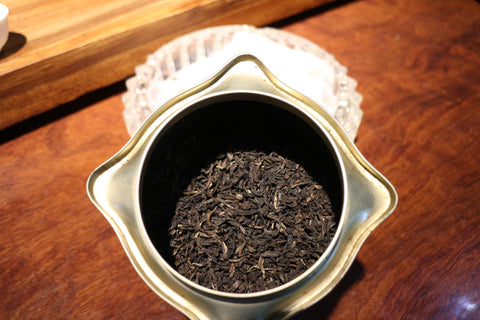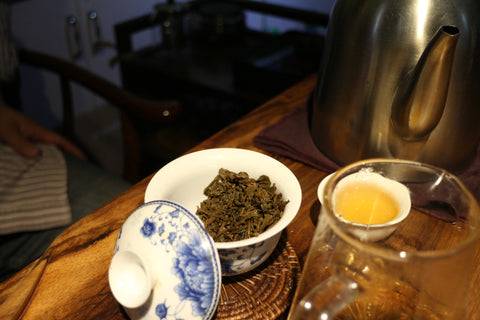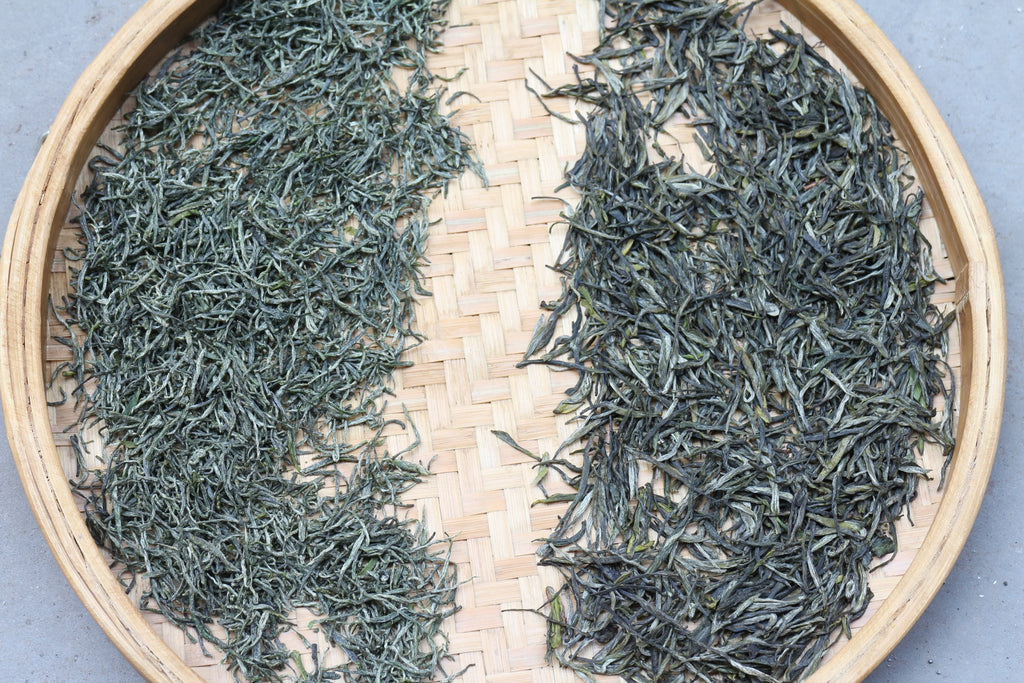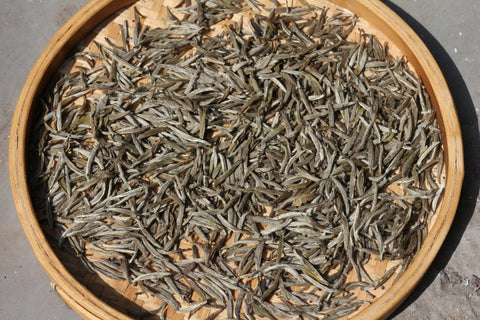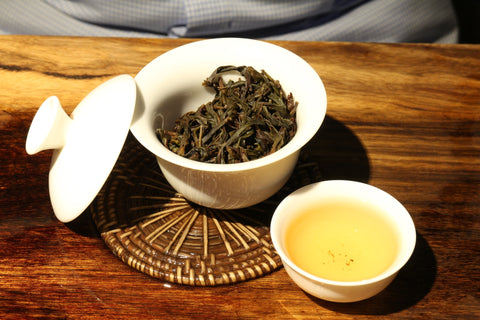Ever Heard of Aged Green Tea?
Zhengzhou, 17 April 2018
After five hours on a high-speed train, I alight at Zhengzhou, the capital of the Henan Province, 1000 kilometres northwest of Shanghai. I meet Benjamin, who's arrived a little before me. After dinner, we go to drink a digestive tea at Jerry's tea shop (many Chinese people also take an English name).
I have come to Henan for Xinyang Maojian, a green tea often numbered among the ten most famous Chinese teas. It is known for its velvety (mian) and sweet (tian) flavour, and for its floral fragrance (hua xiang). But for fresh green tea, there will be time enough tomorrow; this evening, Jerry delights us with a rarity from Yunnan: aged green tea!
In the nineties, Jerry bought a large amount of tea on clearance from a closing shop. There were many types of Yunnan tea (both Pu'er and green) and Wuyi Rock tea available. At the time, the latter was a second-choice tea, not renowned as it is today. Rather, the green teas from Yunnan were pricey and in vogue. He opted, therefore, for these.
Most of the Yunnan tea factories were owned by the state in the nineties—the majority of the tea for domestic consumption was produced by the "Ba Zhong" company, while "Yunnan Tea Imp. & Exp. Corporation" dealt with tea destined to be exported.
The leaves for green tea were cut into little pieces and sorted into different qualities, according to their size. The tea was also divided by the type of cooking (the leaves for green tea must be heated at high temperatures to deactivate the enzymes that cause oxidation):
- Hong Qing = leaves cooked with hot air
- Zheng Qing = steamed
- Chao Qing = cooked in a wok or rotating oven
- Shai Qing = dried in the sun
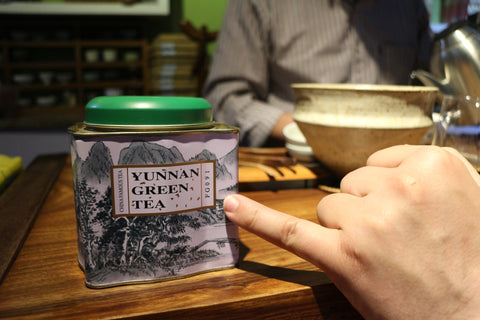

Aged green tea from Yunnan (1994 vintage). Leaves cooked with hot air (Hong Qing). The flavour resembles a middle-aged Sheng Pu'er (8-12 years).

Aged green tea from Yunnan (1994). Steamed leaves (Zheng Qing). The flavour is incredibly fresh for a 24-year-old tea! Thanks to the treatment at high temperatures, the leaves ripen much slower than pu'er.
Zhengzhou, 18 April 2018
I spend the whole day tasting tea at Jerry's shop. I start with a comparison of two Xinyang Maojians: the first is made from cultivated plants created by cloning, as is common in the production of all tea; the second produced from plants grown from seed. The difference is remarkable, both in appearance and taste. The leaves of the cloned tea are smaller, more tapered, and distinctly downier; in China, the appearance of the leaves is often more important than the taste, and these leaves completely fulfil the criteria for a perfect Maojian (which means "downy tips"). The second tea, however, has a much fuller and more balanced taste.
Xinyang Maojian: left, from cloned bushes; right, from plants grown from seed.
The last several weeks, Jerry, like myself, has been travelling to acquire tea. Among his various other destinations, he also stopped in Panxi (Fuding, Fujian) to select white tea, and knows several farmers in the area, who have supplied him for years. I don't have time this year to go in person to Fuding, so I am taking the opportunity to try the teas he's selected.
The Yin Zhen (Silver Needle) from 2018 is refreshing and floral, though it is still too grassy. In fact, white tea should be allowed to mature for at least a year before being infused; the first months are rather grassy and often acidic. The 2017 Yin Zhen is instead much more pleasant; the flavour still very delicate, as the aftertaste of hay, typical of whites, has yet to develop; a spring tea. The 2013 Yin Zhen has a much fuller and warmer flavour; mature.
For Nannuoshan, I'm purchasing the 2017 Yin Zhen, and am curious to see how it will mature over the coming years. I also choose the Shou Mei of the same year and produced by the same farmer.

From left to right: Bai Hao Yin Zhen from years 2018, 2017, and 2011.
During his last trip, Jerry also stopped at Fenghuang (Guangdong) to choose some Phoenix Single Bush, also known as Fenghuang Dancong. We conclude the day by tasting them: Milan Xiang, Song Zhong, Yin Hua Xiang, and Lang Cai. I really enjoy the Yin Hua Xiang (an alternative name for Ya Shi Xiang) and the Song Zhong, and the prices, particularly of the first, are quite tempting. I will take a little with me to taste again in my own time during the following days.
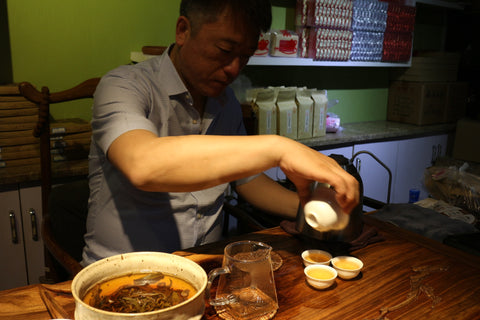
Jerry prepares the Dancongs in the "Chaozhou Gongfu Cha" style: poured directly into the cups, without a pitcher.
Tomorrow, we all go to Xinyang, where a single family has been producing Maojian for generations!
Written by Gabriele






